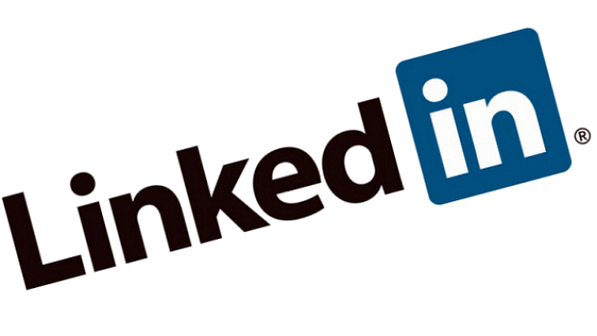LinkedIn is the leading professional networking site and is a tool for establishing a professional online image and network. Make sure to visit or call your college center for student services or career counseling center for tips on how to build a successful and professional profile.
Follow these easy tips to learn how to develop your LinkedIn profile.
Your profile should include the following information:
Professional “Headline”
After your name, the professional headline is the first line people will see. Try to go beyond simply putting “student”.
Examples:
Michael Johnson
Youth Leadership Intern, Boys and Girls Club, Atlanta, GA
Morehouse College Senior/Graduate Student
Or
Kenya Jackson
Camp Counselor, YMCA, Washington, D.C.
Howard University, Early Elementary Education Major Junior, Student
Or
Shonda Wilson
Research Assistant, Writers Guild, New York, NY
Dartmouth College, Senior Education and Literature Major
Photo:
This is the image a person will have of you. Be mindful of what you want to project and be sure that the photo is professional and appropriate for anyone who will see it.
LinkedIn URL:
Claim your personalized URL
Summary:
Use this section to highlight your key work experiences and accomplishments.
Experience:
This should include experiences that are relevant to your career goals. You can
include activities and leadership roles in this section. Give a brief description of your position, the dates you worked and the name of the organization at which you worked, similar to what you have on your resume.
Education:
Include, in reverse chronological order, the university and any other schools or programs you attended.
Additional Sections & Information:
Do NOT exaggerate. The world knows you have little or no experience. You can choose to add additional sections to your profile, or incorporate this information in your education, experience or summary sections.
Additional Sections:
Languages, volunteer experiences, certifications, honors & awards, skills and expertise,
Professional Associations:
Here it is important to think of joining a professional association, if you have not done so already. The memberships can be costly, but worth it, they keep you up to date on the latest in your field or specialty.
Some professional organizations to consider:
The National Education Association (NEA)
Association of American Educators (AAE)
National Council of Teachers of Mathematics (NCTM)
National Science Teachers Association (NSTA)
National Association of Special Education Teachers (NASET)
Music Teachers National Association (MTNA)
National Association of Biology Teachers (NABT)
National Council for the Social Studies (NCSS)
Volunteer Experiences:
Even if you have babysat siblings or cousins, this counts as volunteer work. Include, volunteer at an after school program, tutoring, soup kitchen, food pantry, shelter, or elsewhere.
Applications:
LinkedIn Applications enable you to enrich your profile. Available applications include Creative Portfolio Display, Blog Link, Word Press, Company Buzz
Joining groups (This section is located under “Interests”):
Join as many LinkedIn groups as are of interest to you. You will be included in periodic emails from these groups, and be able to ask questions of and reply to questions of others in the group.
Sample Teacher Groups:
Teachers’ Lounge, Teacher Resources For Better Teaching, Science Teacher Network, Teacher Support Group, Teacher Training and Education, Elementary group for teachers
Alumni Network (This section is located under “Interests”)
Industry and Interest Groups:
There are groups for every industry and interest area. Use the “search” tool to identify ones that fit with your interests, for example search “education” or “teacher”
Populate your profile with connections:
The bigger your network, the easier it will be to connect to others in a broad variety of fields and locations. Start by searching for people you already know in the Advanced Search section and sending them an invitation to connect. Make sure to customize your invitation. Potential people to include in your network:
- Friends, relatives, pastor or church members, high school, college/university classmates, current and former professors or teachers, co-workers and supervisors
- It’s best to connect only with people you know and/or have met in person. Most people won’t accept an invitation to connect from someone they’ve never met. LinkedIn can be used to build your network and develop contacts with people in all education fields that interest you, including international education.
- Use the advanced search tool to find people and ask for an informational interview/conversation to learn more about them and their career path.
Finally, this is a great 11-minute step-by-step process on youtube for creating a professional LinkedIn Profile: https://www.youtube.com/watch?v=1BMPoYosybY&noredirect=1
Your LinkedIn Summary
- Summarize your experiences and goals
- Who are you, what direction are you going?
- Include your specialties and skills
- Keep it brief and specific
Template 1:
I have dedicated my undergraduate (or graduate) studies to ______________________ with a focus on ________________. In studying _______________ as well as taking a range of ____________ and_____________ classes, I have been able to develop my ____________ and _____________skills.
Courses outside my major have allowed me to explore other interests in ________, _________ and ________________. I am looking for opportunities in _________________ that will allow me to combine my strengths/background in _______________ and ___________________.
Template 2:
I am a ______________ at ____________ College or University majoring in ____________________ and particularly interested in_________________. I have experience working in/with/for ___________________ and ___________________, as well as ________________________. I am looking for opportunities to apply my strengths in ___________________ and ____________________ to _______________________.
Template 3:
I have devoted my studies to _______________________, and am looking for a job in education. My work as a _____________ and ________________ complemented my academic coursework at _________ College or University and allowed me to develop an in-depth understanding of __________________. I am excited to apply my strengths in _______________ and __________________ to the field of teaching.







